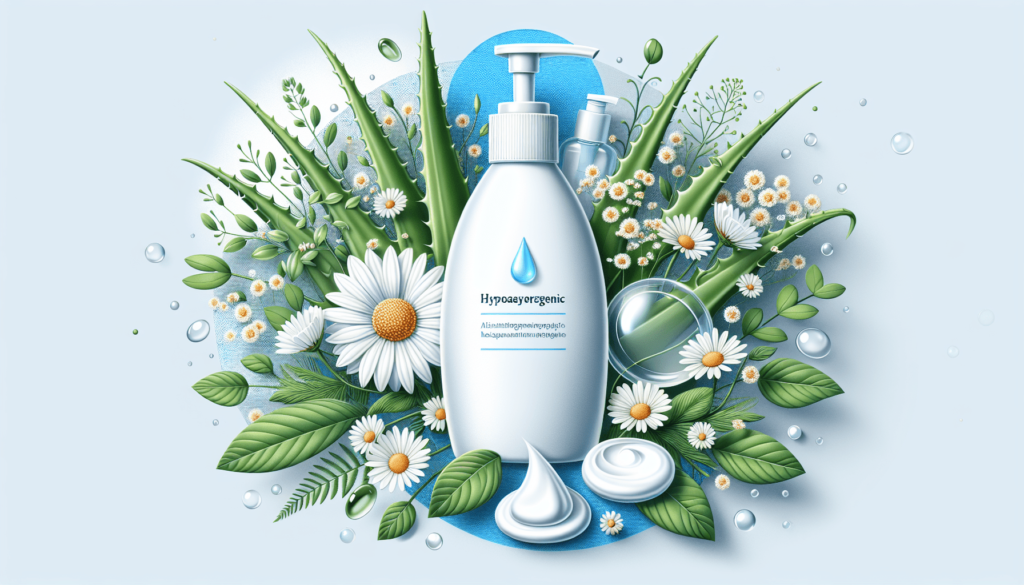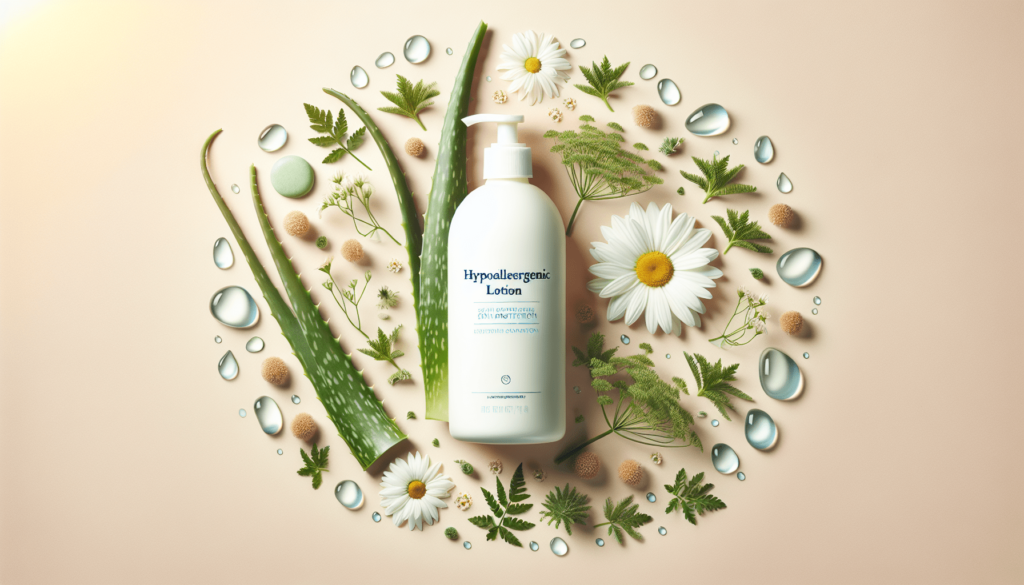Welcome to “Top Ways to Protect Your Skin from Allergy Triggers”! In this guide, you’ll discover effective and simple strategies to shield your skin from those pesky allergens that can cause irritation and discomfort. From understanding your triggers to incorporating soothing skincare routines, you’ll find practical tips to keep your skin happy and healthy. Dive in to learn how you can take control and enjoy clearer, calmer skin every day.
Top Ways to Protect Your Skin from Allergy Triggers
Have you ever found yourself dealing with sudden, uncomfortable skin irritations, and wondered what might be the cause? You’d be surprised how often skin allergies can be traced back to common trigger elements we encounter every day. Thankfully, you can take steps to protect yourself from these pesky irritants and minimize their impact on your life.
In this friendly guide, we’ll dive into the top ways to protect your skin from allergy triggers. We’ll break down the information into digestible pieces, making it easier for you to keep your skin happy and healthy. Let’s get started!

Understanding Skin Allergies
Before diving into prevention strategies, it’s crucial to understand what skin allergies are and how they affect you. A skin allergy occurs when your immune system reacts to a substance that it mistakenly identifies as harmful. This can lead to symptoms like redness, itching, hives, and swelling.
Common Symptoms of Skin Allergies
- Redness: Skin may turn red in localized areas.
- Itching: A persistent urge to scratch the affected area.
- Hives: Raised, itchy welts on the skin.
- Swelling: Puffiness in the skin tissue.
Common Triggers for Skin Allergies
Skin allergies can be triggered by several common substances, each affecting different people in varied ways. Identifying your specific triggers is the first step to prevention.
| Trigger | Common Sources |
|---|---|
| Pollen | Flowers, grasses, trees |
| Dust mites | Bedding, upholstered furniture |
| Pet dander | Fur and skin flakes from pets |
| Molds | Damp environments, bathrooms, basements |
| Certain foods | Nuts, dairy, shellfish |
| Chemical irritants | Detergents, perfumes, hair dyes |
| Metals | Jewelry, zippers, belt buckles |
| Latex | Gloves, balloons, elastic bands |
Understanding your triggers helps you take the necessary steps to avoid them. Now, let’s dive into the proactive measures you can take to protect your skin!
Daily Skincare Routine
Maintaining a consistent skincare routine can significantly reduce the risk of skin allergies. Proper care helps nourish and shield your skin against potential irritants.
Using Gentle Cleansers
Opt for gentle, fragrance-free cleansers that are specifically designed for sensitive skin. Harsh soaps and washes with strong chemicals can strip your skin of essential oils and exacerbate allergic reactions.
Moisturizing Regularly
Hydrated skin is less likely to react to allergens. Use a high-quality moisturizer daily to lock in moisture and create a protective barrier.
- Morning: Apply a lightweight, non-greasy moisturizer before heading out.
- Evening: Opt for a thicker cream to nourish your skin overnight.
Sunscreen Application
The sun’s harsh UV rays can make your skin more susceptible to allergies. Apply a broad-spectrum sunscreen with at least SPF 30 daily, even when it’s cloudy.
Avoiding Hot Showers
While hot showers may feel relaxing, they can strip your skin of natural oils. Opt for lukewarm water instead, and limit your shower time to 10-15 minutes.
Lifestyle Adjustments
Your daily habits and environment play a crucial role in managing skin allergies. Here are some lifestyle adjustments to consider:
Maintaining a Clean Home
A clean living space can significantly reduce exposure to allergens such as dust mites, mold, and pet dander.
- Vacuum Regularly: Use a vacuum with a HEPA filter to trap allergens.
- Wash Bedding Weekly: Use hot water to kill dust mites.
- Reduce Clutter: Minimize items that can collect dust.
- Control Humidity: Keep indoor humidity levels between 30-50% to prevent mold growth.
Pet Management
If you have pets, there are ways to manage pet dander and reduce skin allergies without saying goodbye to your furry friends.
- Bathe Pets Regularly: Use a gentle, pet-friendly shampoo.
- Restrict Access: Keep pets out of specific rooms, especially bedrooms.
- Use Air Purifiers: Devices with HEPA filters can capture pet dander.
Wearing Allergy-Protective Clothing
Certain fabrics and styles can minimize skin contact with potential allergens.
- Cotton and Bamboo: These natural fabrics are less likely to cause irritation.
- Long Sleeves and Pants: Provide a barrier against allergens outdoors.
Identifying and Avoiding Allergens
Knowing your specific allergens is key to avoidance. You might need to experiment or speak with a healthcare provider to identify them accurately.
Patch Testing
Patch testing is a common method to identify specific allergens. During this test, small amounts of potential allergens are applied to your skin to see which one triggers a reaction.
Reading Labels
Become a vigilant label reader, especially if you have known allergens. Check ingredients in skincare products, household cleaners, and even clothing.
Avoid High-Risk Areas
If pollen or mold are your triggers, limit time spent in high-risk areas.
- Stay Indoors During High Pollen Seasons: Especially in the early morning when pollen levels are highest.
- Avoid Damp Areas: Stay clear of basements or poorly ventilated bathrooms.

Medication and Treatments
In some cases, despite your best efforts, you might need medical help to manage your skin allergies. Here are some common options:
Over-the-Counter Solutions
There are numerous OTC products designed to alleviate allergy symptoms.
- Antihistamines: Help reduce itching and discomfort.
- Hydrocortisone Creams: Can reduce inflammation and redness.
- Moisturizing Lotions: Specifically formulated for sensitive skin.
Prescription Medications
For more severe cases, your healthcare provider may prescribe stronger treatments.
- Steroid Creams: Stronger versions are available by prescription.
- Oral Antihistamines: Stronger and often more effective than OTC versions.
- Immunotherapy: Allergy shots that gradually desensitize you to specific allergens.
Natural Remedies
Some people find relief through natural remedies, although these should be used cautiously.
- Oatmeal Baths: Colloidal oatmeal can soothe irritated skin.
- Aloe Vera: A natural moisturizer that can reduce redness.
- Vitamin E: Known for its skin reparative properties.
The Role of Diet in Skin Allergies
Believe it or not, your diet can play a significant role in the health of your skin. Certain foods can either exacerbate or help manage allergy symptoms.
Foods to Avoid
If you’re prone to skin allergies, you might want to avoid these common triggers:
- Dairy: Can cause inflammation in some individuals.
- Nuts: A common allergen for many.
- Shellfish: Another frequent allergen.
- Soy: Can trigger reactions in sensitive individuals.
Foods to Include
Incorporating anti-inflammatory foods into your diet can aid in skin health.
- Omega-3 Rich Foods: Salmon, flax seeds, and walnuts.
- Probiotic Foods: Yogurt, kefir, and sauerkraut.
- Antioxidant-Rich Foods: Berries, leafy greens, and turmeric.
When to See a Doctor
Sometimes, despite your best efforts, your skin allergies might require professional intervention.
Persistent Symptoms
If symptoms persist for more than a few weeks or worsen, it’s time to see a healthcare provider.
Facial Swelling and Breathing Issues
Seek immediate medical help if you experience severe reactions such as facial swelling or difficulty breathing.
Personalized Treatment Plans
A dermatologist can provide a tailored treatment plan, possibly incorporating stronger medications, topical treatments, or even immunotherapy.
Creating a Safe Environment
Lastly, creating a safe environment at home and work can go a long way in preventing skin allergies.
Hypoallergenic Products
Switch to hypoallergenic products wherever possible.
- Skincare: Soaps, lotions, and cosmetics.
- Detergents: Look for fragrance-free, gentle formulas.
- Household Cleaners: Use natural or hypoallergenic options.
Allergy-Proof Your Bedroom
Since you spend a third of your day in bed, making your sleeping area as allergen-free as possible is crucial.
- Replace Pillows and Mattresses: Opt for hypoallergenic options.
- Encase Bedding: Use allergen-proof covers.
- Wash Linens Frequently: Use hot water to kill dust mites.
Use HEPA Filters
High-Efficiency Particulate Air (HEPA) filters can capture small particles like pollen and pet dander, reducing allergens in your environment.
Outdoor Precautions
When excursions are unavoidable, there are ways to minimize exposure to allergens.
- Wear Sunglasses and Hats: These can help keep pollen away from your face.
- Shower and Change Clothes: Remove allergens from your skin and clothing when you return indoors.
Conclusion
Living with skin allergies can indeed be challenging, but it doesn’t have to rule your life. By understanding your triggers, adopting a consistent skincare routine, making necessary lifestyle adjustments, and knowing when to seek medical help, you can significantly reduce the impact of allergens on your skin.
Feel confident in taking these proactive steps to protect your skin from allergy triggers. Here’s to itch-free, healthy skin!
